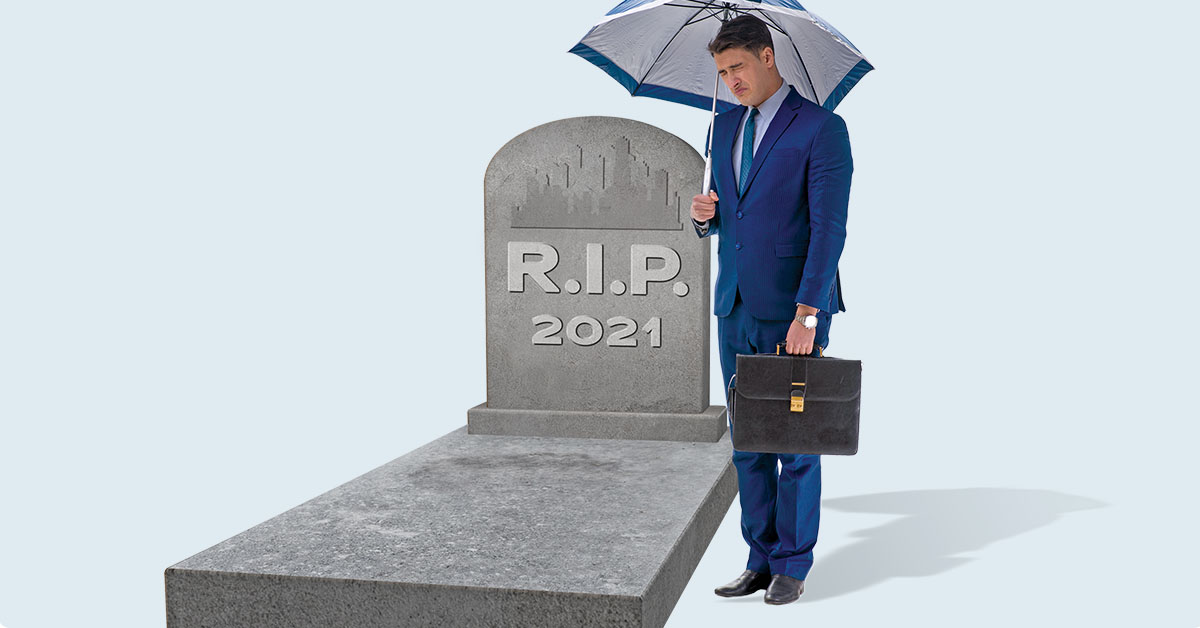At the height of the COVID-19 pandemic, it appeared that everyone was running from big cities. New Yorkers were ditching the Big Apple and Los Angeles had become a ghost town. Meanwhile, everyone wanted to know if these cities could make a comeback.
The New York Times wrote about New Yorkers fleeing to the suburbs and creating massive demand for homes, regardless of the cost. In July 2020, the Times reported a 44% annual increase in home sales for the suburban counties surrounding New York City, with some communities seeing sales more than double. At the same time, Manhattan home sales fell by 56%. The report noted one property in the suburb of East Orange, New Jersey, that nearly 100 people showed up to see. In the ensuing bidding war, the house sold for 21% above asking price.
A year later, however, this mass exodus appears to be in the early stages of reversing. In fact, many indicators show that the housing recovery for the Big Apple has been going on for a while now. According to the Elliman Report — which tracks rent metrics in the boroughs of Manhattan, Brooklyn and Queens — Manhattan rent prices and new leases were rebounding this past spring. In May 2021, rent prices jumped more than 11% on a monthly basis and new lease signings were up a whopping 333% compared to May 2020.
Bloomberg reported that New Yorkers who left the city due to the pandemic are coming back. This was resulting in skyrocketing housing prices this past fall, with Manhattan homes in prime neighborhoods experiencing price increases of 24% to 40% compared to fall 2020. Choice neighborhoods in Brooklyn were seeing year-over-year price appreciation of 17% to 20%. Meanwhile, rents in Los Angeles reached their pandemic-era low point in February of last year, according to Zumper, an apartment rental service. By November 2021, prices were up about 10% year over year and climbing fast.
Recoveries always seem to begin while many of us aren’t paying attention. And this appears to be the case with big-city housing markets. There has been much hand-wringing over the past two years about the end of the big-city boom, including the Los Angeles Times asking whether L.A.’s downtown area can recover. It appears that this recovery is in motion, even if it’s a slow one.
Eric Fox, chief economist at Veros Real Estate Solutions, a property analytics company, says that data still shows an exodus to the suburbs. In California, his current forecast for the top markets in valuation growth includes San Diego, Sacramento and Riverside. The weakest markets in the state, he says, include downtown Los Angeles and San Francisco.
“If I were a prognosticator, I would be very reluctant to write off big cities,” Fox says. “I think once everything settles down and we have the new normal, there will still be attractions to big cities.”
Fox, who focuses on property appreciation, isn’t expecting this to be a bad year for big cities. On the contrary, they will do just fine. He estimates property appreciation values in New York City, Chicago, Houston, San Francisco and Los Angeles to rise between 5.5% and 7.7%. Veros, however, is estimating much higher growth in some of the super-hot midsized markets, with Phoenix experiencing a 14% appreciation in values, San Diego rising by 13% and Sacramento jumping by 12%. The problem isn’t necessarily with primary markets, Fox says — it’s that many secondary markets are in higher demand.
“Right now, rentals are very strong, and new-home and condo purchases are all very strong, whether you are in the city or in suburban areas,” Fox says. “It’s not as if big cities are doing horribly. It’s just that their forecast appreciation isn’t as high as we are seeing in the suburbs.”
Another ongoing storyline that ties into this trend is the opening up of small-town markets to the work-from-anywhere technology army. There is truth to this phenomenon. The National Association of Realtors reported that virtually all of the 183 metro areas it tracks, including many smaller markets, recorded year-over-year price increases in first-quarter 2021, with 89% of these markets experiencing double-digit increases.
But will a considerable number of workers who are free from the office really move to rural areas? Anita Kramer, for one, is skeptical. The senior vice president of the Urban Land Institute’s Center for Real Estate Economics and Capital Markets (see the Q&A on Page 20) says this seismic shift would depend upon a number of factors. This includes whether companies will require employees to spend even a few days a week in the office — which are often in or near large cities — as well the job opportunities in rural areas.
“Our surveys of real estate experts show that most people who are moving farther out of the city are somewhat untethered — but not completely untethered — from the workplace,” Kramer says. “They will be coming into the office a few days a week. That will preclude them from living too far away. So, the sense is that most people who are moving are staying within the same metropolitan area, even if it’s the fringe of the metropolitan area.” ●





